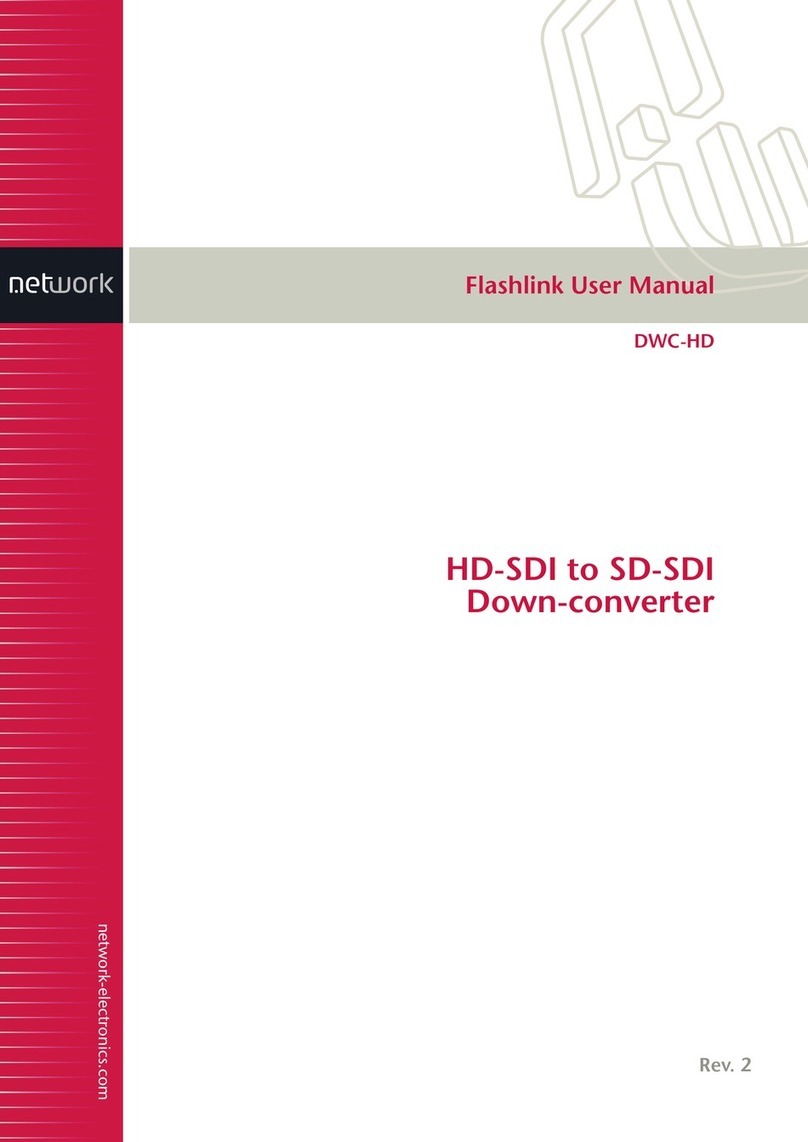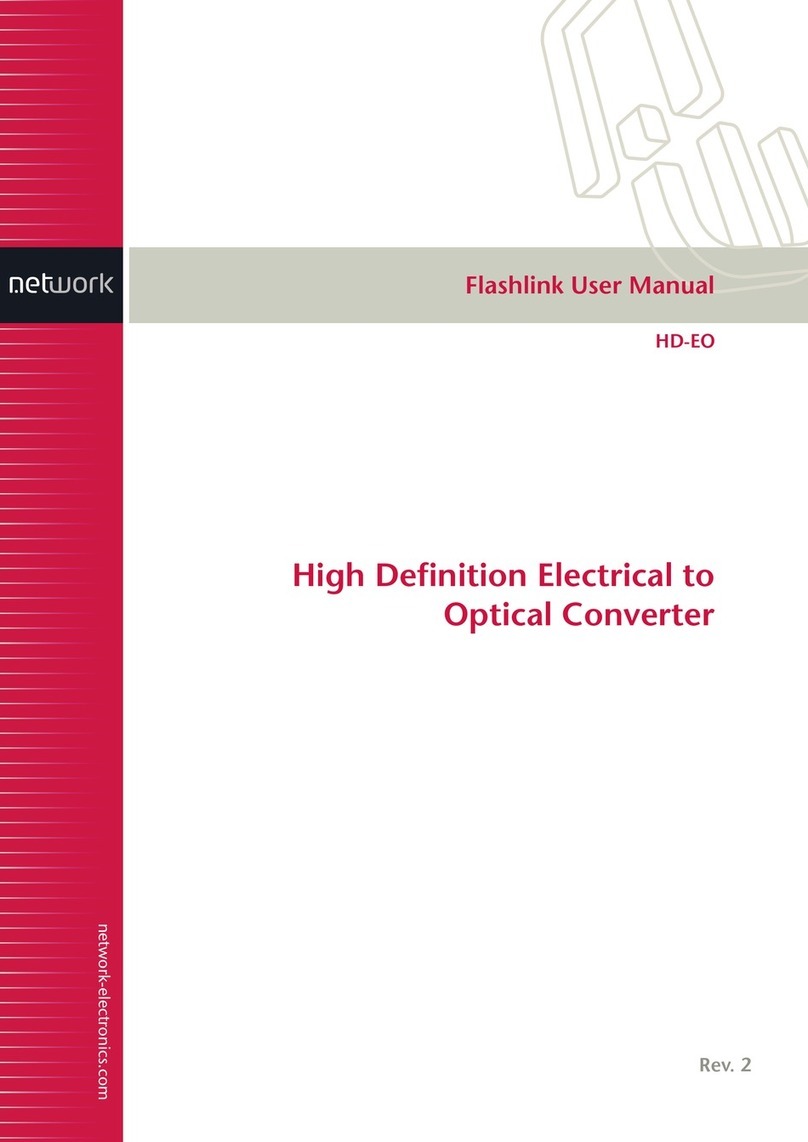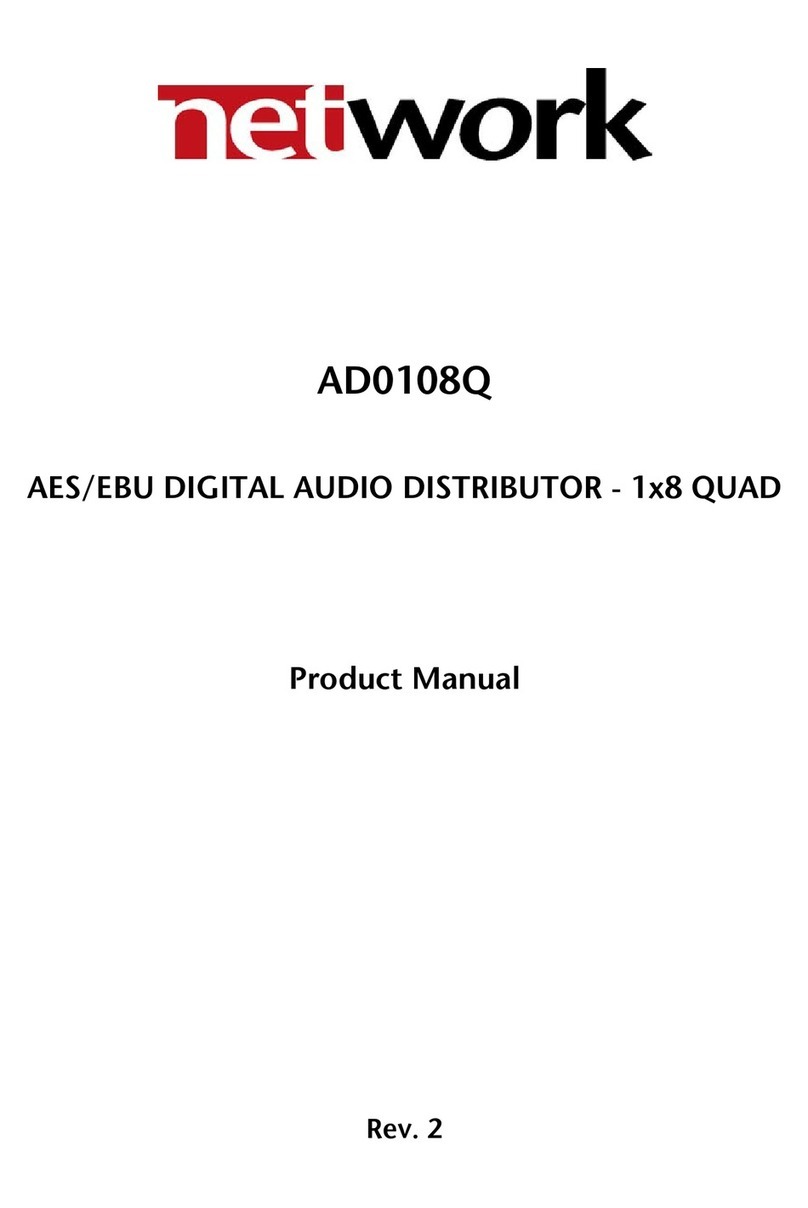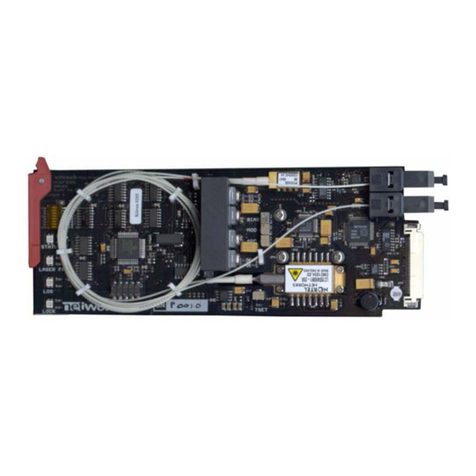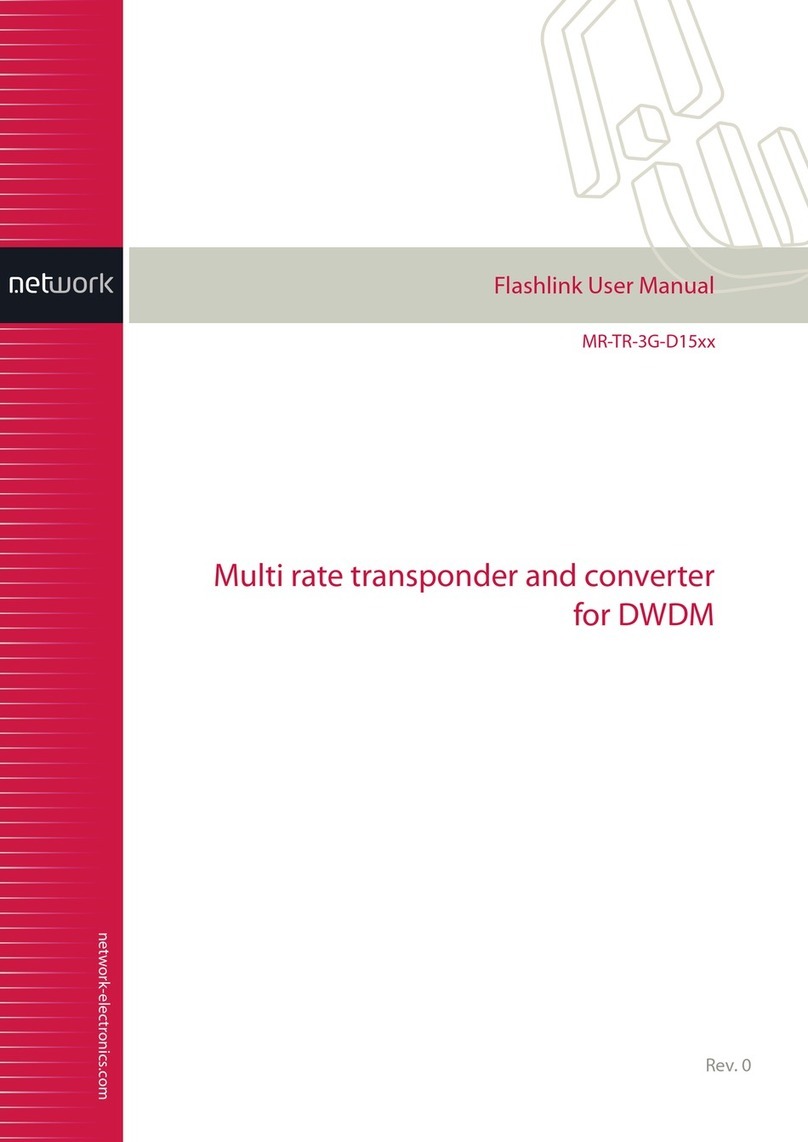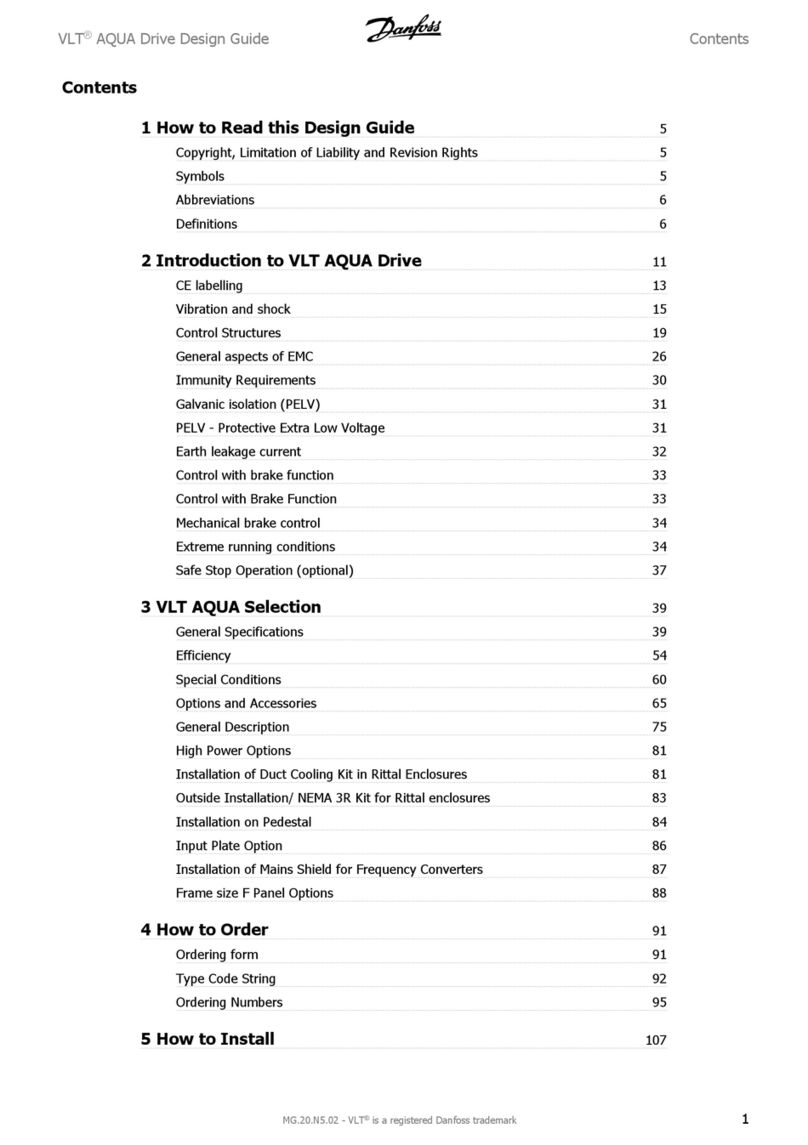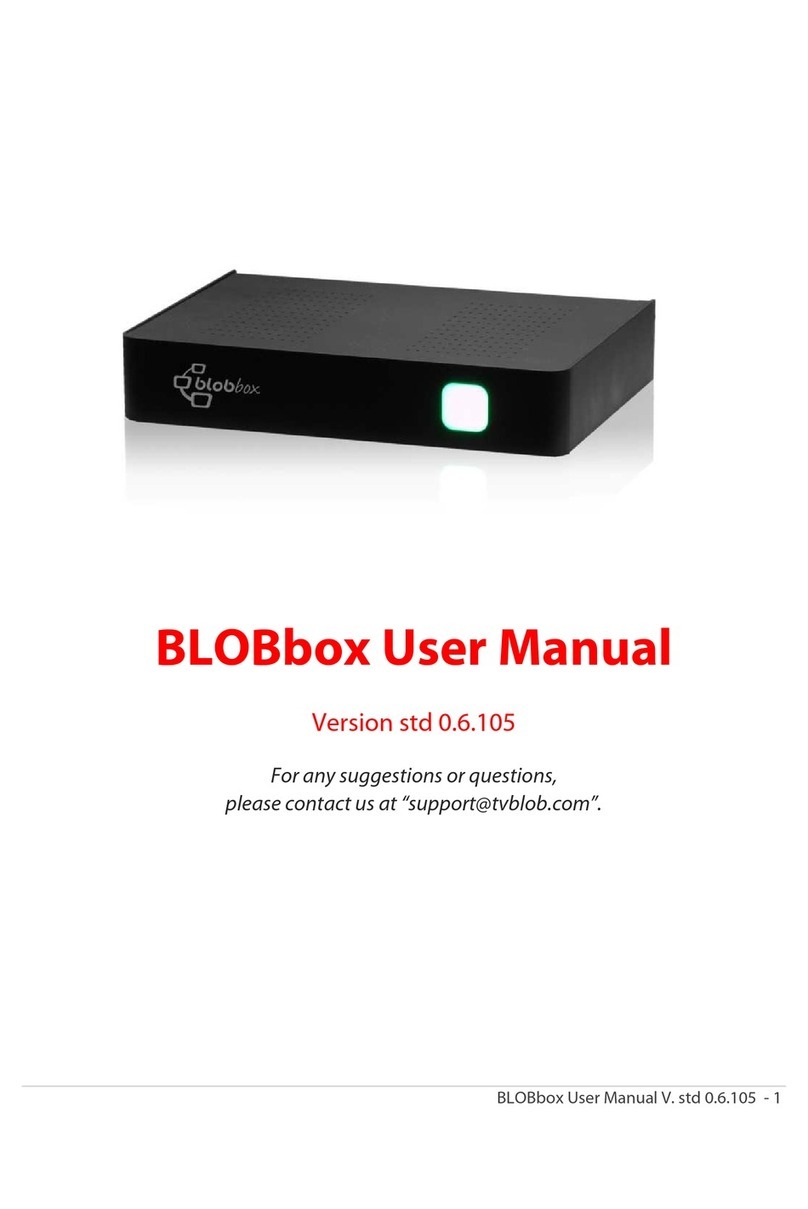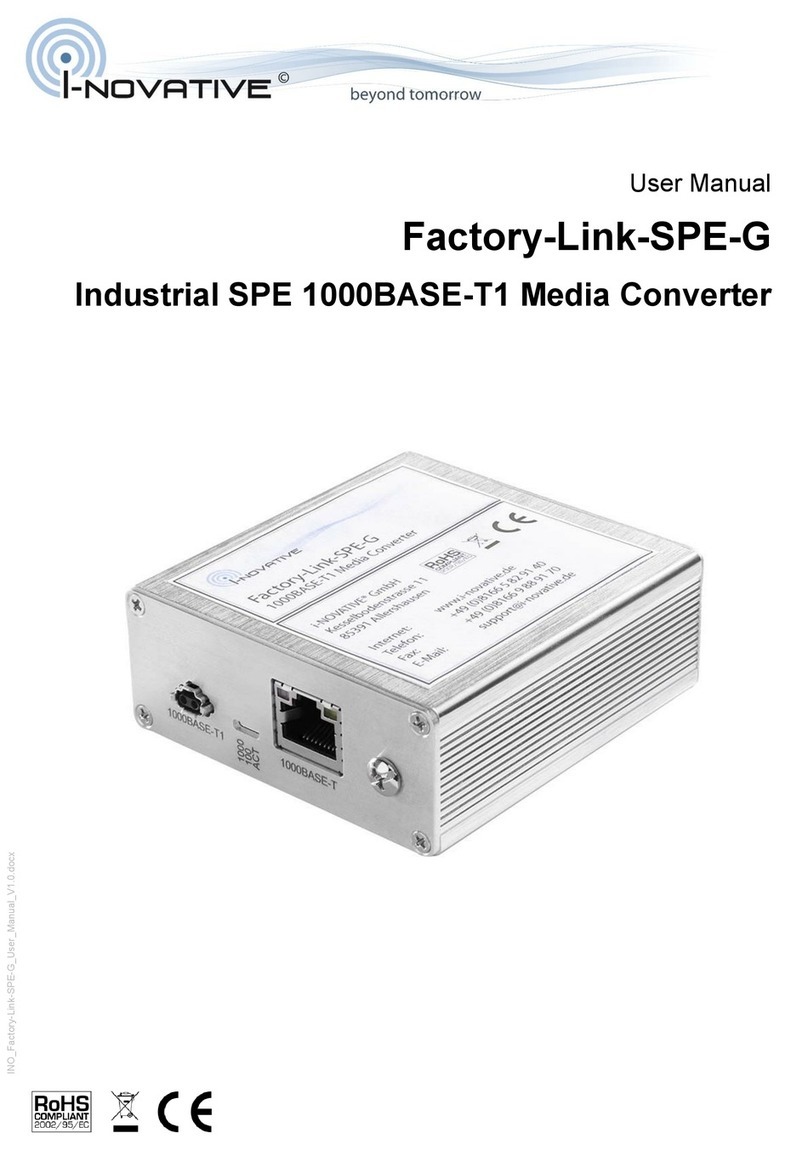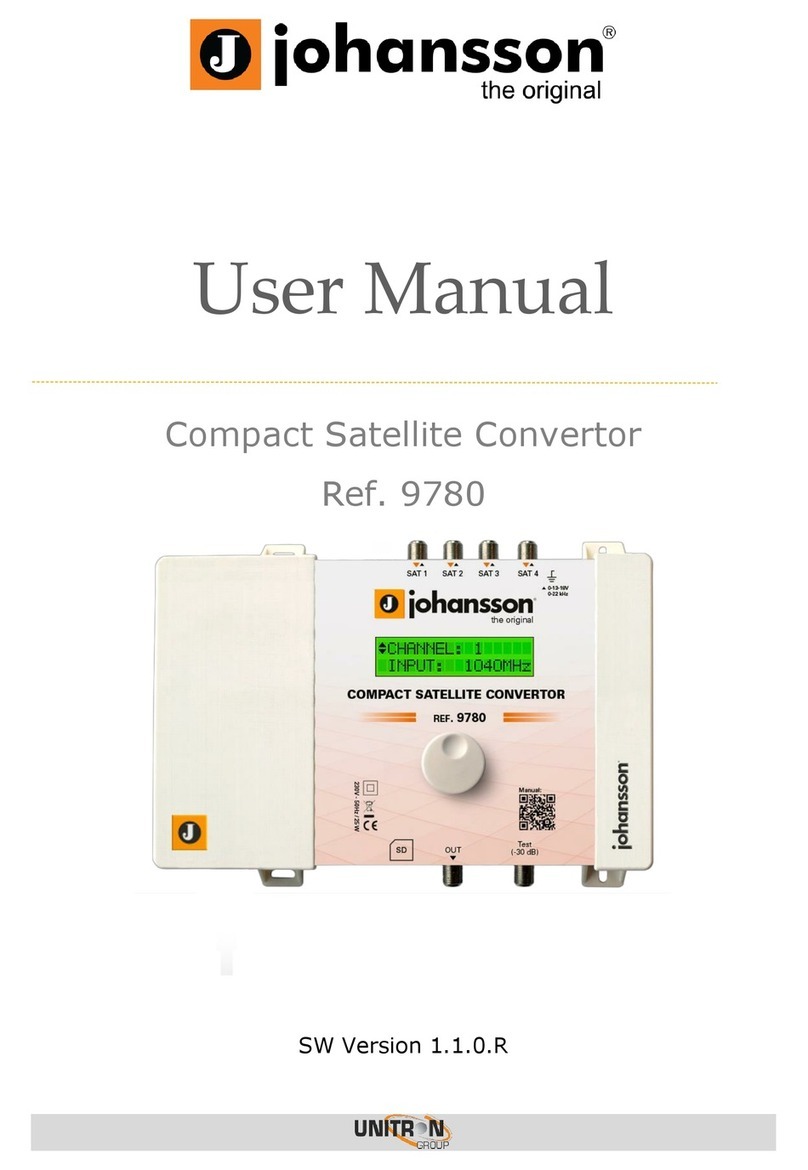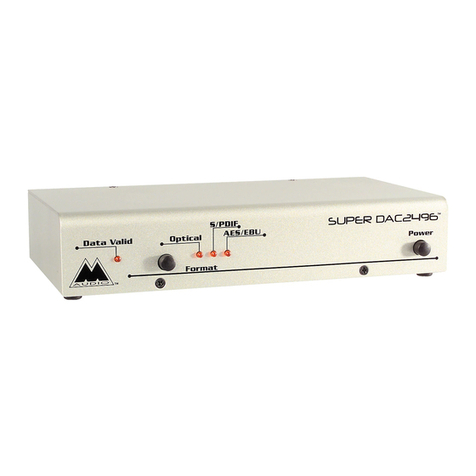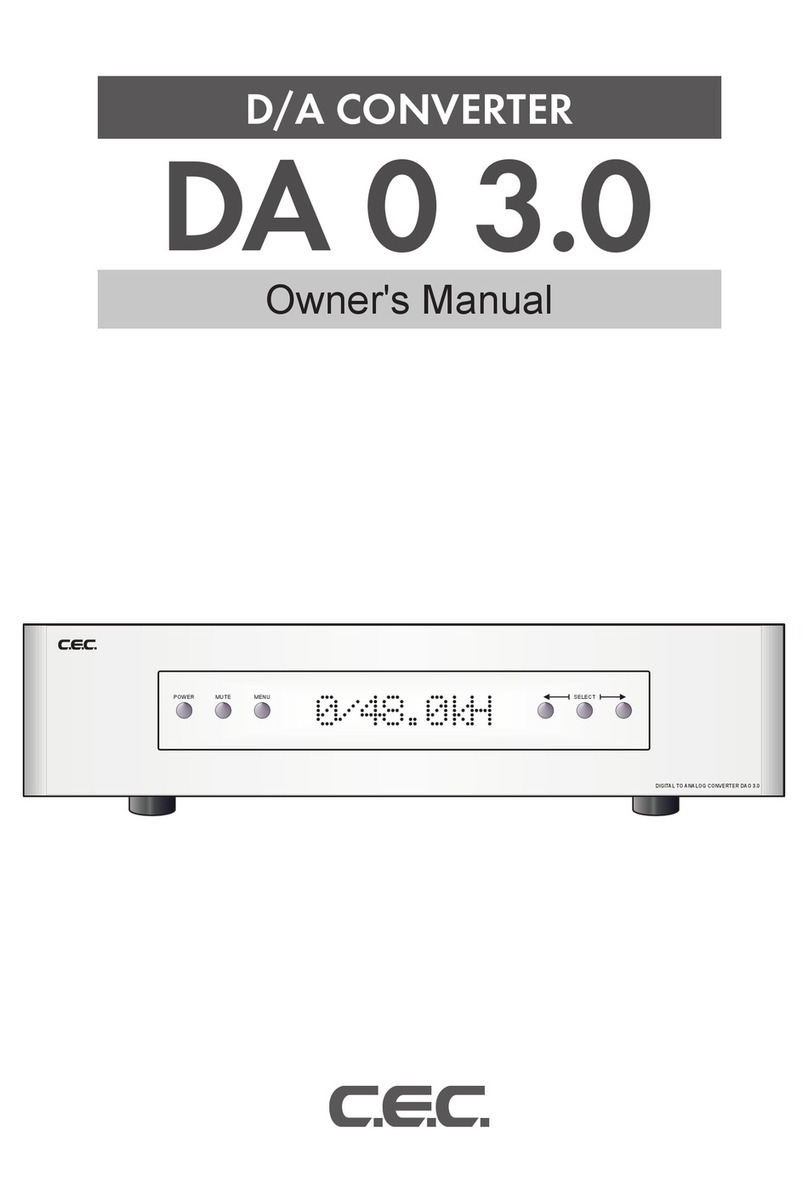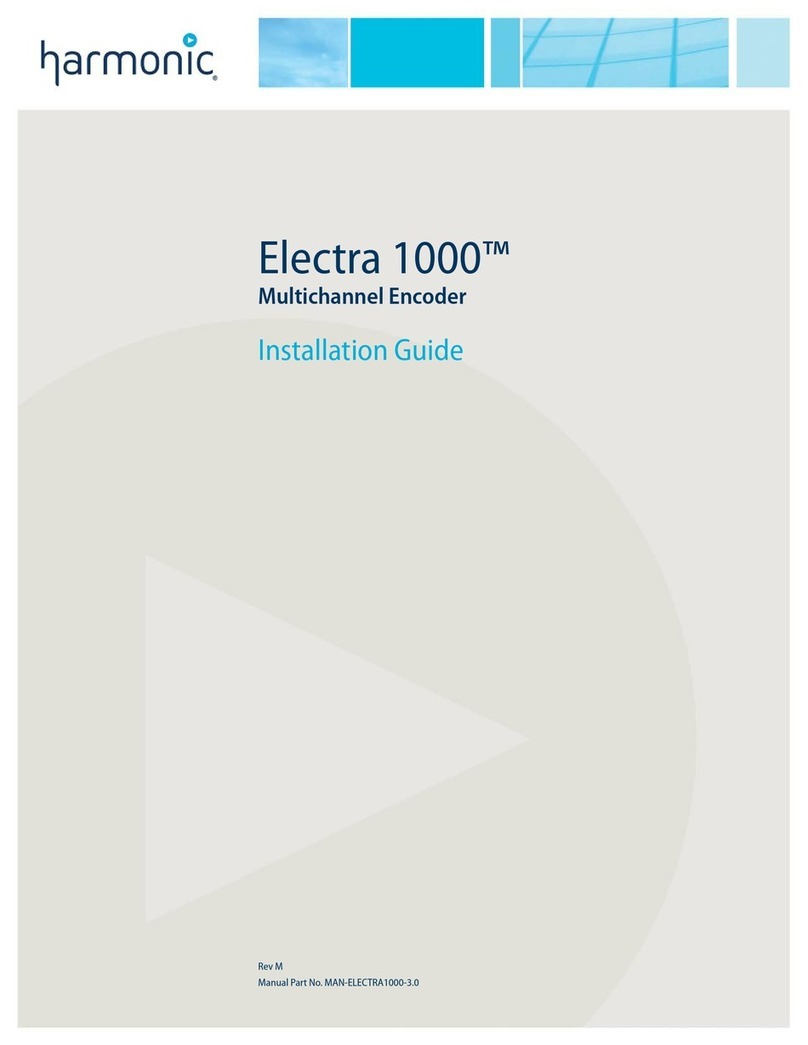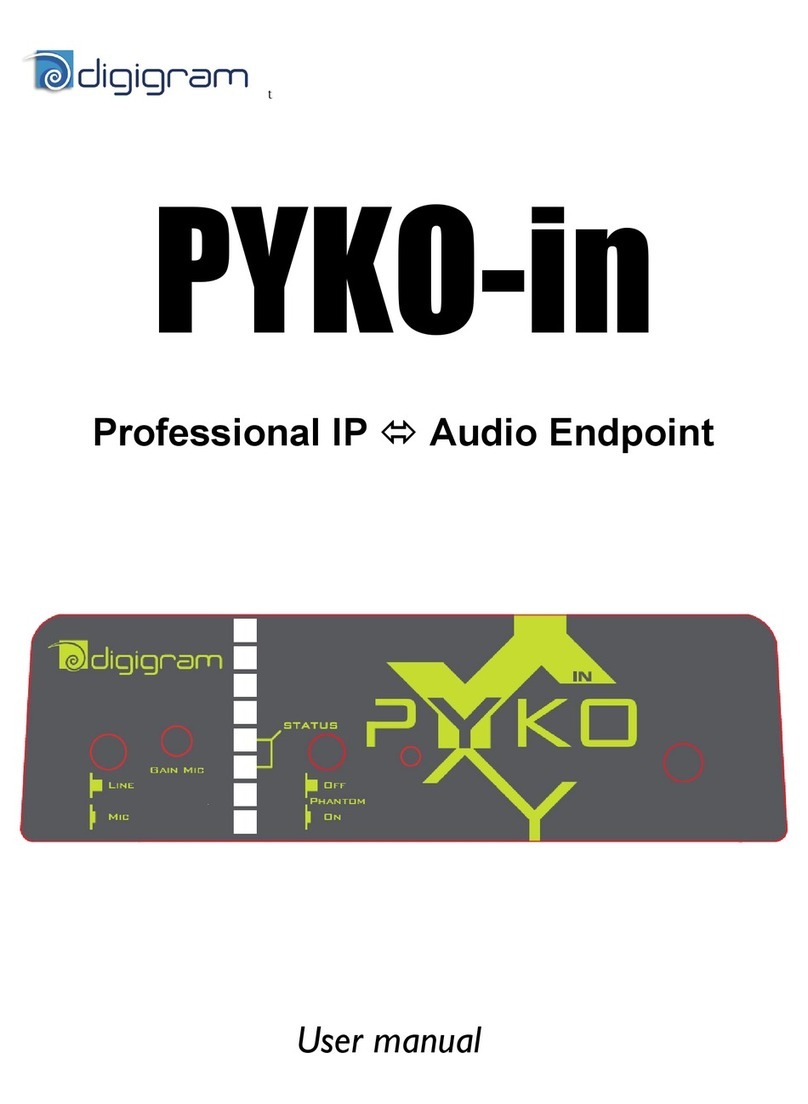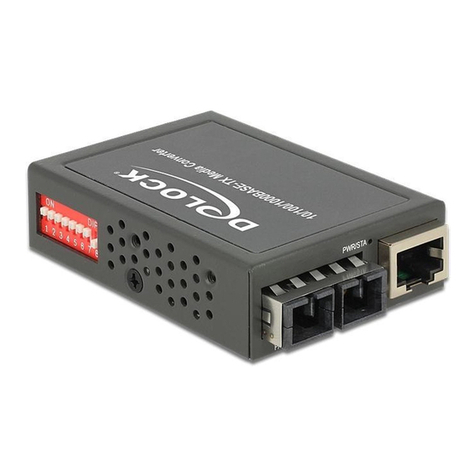network Flashlink LB-EO User manual

network-electronics.com
L-BAND Electrical to Optical
Converter
Rev. 3
Flashlink User Manual
LB-EO

LB-EO Rev. 3
Network Electronics ASA
Thorøya
P.O. Box 1020
N-3204 Sandefjord, Norway
Phone: +47 33 48 99 99
Fax: +47 33 48 99 98
Email: [email protected]
www.network-electronics.com
Support Phone: +47 90 60 99 99
Revision history
Current revision of this document is the uppermost in the table below.
Rev. Repl. Date Sign Change description
3 2 2007-11-02 GMW Added new product LB-EO-13T 0dBm. Added
Materials Declaration and EFUP.
2 1 2007-09-25 GMW Changed optical budget to 16dB for 15T/CWDM
and 6dB for 13T
1 0 2007-07-04 GMW Added specifications for LB-EO-13T
0 A 2007-03-29 GMW First official version
A - 2006-05-01 GMW Preliminary version
network-electronics.com | 2

LB-EO Rev. 3
Contents
Revision history..........................................................................................................2
1 Product overview....................................................................................................4
2 Specifications..........................................................................................................5
2.1 RF Characteristics........................................................................................................... 5
2.2 Optical Characteristics ................................................................................................... 5
2.3 Power consumption....................................................................................................... 5
2.4 Environmental conditions .............................................................................................. 5
3 Configuration .........................................................................................................6
3.1 Format configuration ..................................................................................................... 6
4 Connections ...........................................................................................................8
4.1 Mounting the connector module................................................................................... 9
4.2 Terminal format support.............................................................................................. 10
5 Module status.......................................................................................................11
5.1 GPI Alarm – Module status outputs .............................................................................. 11
5.2 Front panel – Status monitoring................................................................................... 12
6 Laser safety precautions ........................................................................................13
General environmental requirements for Network Electronics equipment................14
Product Warranty ....................................................................................................15
Appendix A Materials declaration and recycling information ...................................16
A.1 Materials declaration ................................................................................................... 16
6.2 Environmentally-friendly use period ............................................................................. 16
A.1 Recycling information.................................................................................................. 17
network-electronics.com | 3

LB-EO Rev. 3
1Product overview
The Flashlink LB-EO is an electrical to fibre optical converter module providing high
performance media conversion for analogue signals with bandwidth from 950 to 2150 MHz.
This state of the art unit offers low noise amplifiers and a high quality laser diode technology
with low distortion and capable of amplifying large signal levels. The attenuator is a high
performance digitally controlled device, giving low distortion and flat frequency response.
The Flashlink LB-EO is therefore the first choice for all optical transport demands on L-band.
The Flashlink LB-EO converter and the Flashlink LB-OE converter can transport all L-band
signals between 950 and 2150 MHz over long distances using fibre optical transport media.
The optical output comes with a sophisticated wideband laser diode designed to convert the
electrical signal to optical giving very little inter modulation and excellent signal to noise
ratio.
There is also an attenuated electrical monitor output for test and service purposes as well as a
remote control interface.
Figure 1: LB-EO L-band electrical to optical converter.
This L-band link is normally used in conjunction with other equipment like satellite tuners,
LNBs in parabolic dishes etc, and the link performance is dependant of good signal to noise
ratio from the signal source and good noise figure of the receiver equipment. The link quality
is also dependant of the number of channels transferred on the link. For instance, the link’s
signal to noise ratio is reduced with 3dB when doubling the number of the channels (twice
the power). If the link’s input signal has a lot of noise or the receiver’s sensitivity is low, the
link’s maximum possible loss will correspondingly be reduced.
network-electronics.com | 4

LB-EO Rev. 3
2Specifications
2.1 RF Characteristics
Frequency band width 950-2150 MHz
Return loss >10dB
Gain flatness ±1.5dB over entire band
±0.25dB at any 36 MHz
Maximum usable input
signal < -5dBm
Maximum input signal
without damage >+10dBm
Inter modulation products
(two carriers, 5dB optical
loss)
< -55dBc (15T/CWDM)
< -45dBc (13T)
Link gain 40dB
Optical link budget 16dB/50km (15T/CWDM)
6dB (13T)
1dB compression (output) 0dBm
Noise figure <10dB @ 3dB fibre optical loss
<20dB @ 16dB fibre optical loss
Carrier to noise ratio
(CNR)with maximum input
power
>45dB @ 36MHz (15T/CWDM)
>35dB @ 36MHz (13T)
Spurious free dynamic range
(SFDR) – input signal level -
25dBm >110dBc/Hz
2.2 Optical Characteristics
Wavelength 1310nm ±40nm, 10 CWDM channels ±2nm
1290, 1310, 1330, 1350, 1470, 1490, 1510, 1530, 1550 and
1570 nm
Power output +3dBm (15T/CWDM)
0dBm or -3dBm (13T)
2.3 Power consumption
Maximum power
consumption
<3W (+5V)
<1.5W (-15V)
<1.5W (+15V)
2.4 Environmental conditions
Operation temperature
range 0°C – 45°C
Operation without damage
temperature range -10°C – 55°C
network-electronics.com | 5

LB-EO Rev. 3
3Configuration
3.1 Format configuration
The LB-EO can be configured in three different modes:
−Automatic gain control (AGC mode)
−Manually controlled gain using rotary switches (SW2 and SW3)
−Sample AGC (automatically adjust gain and lock gain adjustment)
The configuration can either be set with a DIP switch or with the Flashlink GYDA Control
System. The layout of the Flashlink LB-EO is shown in the drawing below with the DIP switch
to the upper left position.
Figure 2: LB-EO board layout.
For setting the gain manually, use the rotary switches SW2 and SW3 situated near the
extractor handle. The two switches make a two digit number. SW3 is the tens and SW2 is
the ones. The number is gain in decibel (0-31dB). If larger number than 31 is set, the gain
will be 31. An ideal setting for the attenuator is LOS green and no light in LEVEL. Decrease
the number until LEVEL orange, and then increase the number one by one until LEVEL stops
lighting.
network-electronics.com | 6

LB-EO Rev. 3
DIP switch configuration must be set according to the table below:
Switch
# Label Function,
DIP = ON
Function,
DIP = OFF Comment
1 AGC Automatic gain
control
Manual gain
control
2 R/S Run AGC Sample AGC level Only valid in Manual gain
control
3 LNB Enable power
supply for LNB
Disable power
supply for LNB
4 H/V Horizontal
polarization
Vertical polarization Sets voltage on LNB
5 LLC Line length
compensation on
Line length
compensation off
If on, output voltage from card
to LNB will increase by 1 volt.
Set to ON when using long
cables (cable more than approx
3 ohms DC resistance in cable)
6 H/L High band Low band 22kHz tone control
7 GPI H/V and H/L
controlled by GPI
H/V and H/L
controlled by DIP
or GYDA
When GPI is set, DIP 4 and 6
will be disregarded
8 OVR Override GYDA
control. Config.
with DIP switch
GYDA control.
Config. with GYDA
Select configuration from GYDA
All DIP switches are off when pointing towards the release handle.
network-electronics.com | 7

LB-EO Rev. 3
4Connections
The Flashlink LB-EO has a dedicated connector module: LB-EO-C1. This module is mounted
at the rear of the sub-rack. The module is shown in the figure below.
Monitor Fibreopticaloutput
RFinput
LNBpowersupply GPI
Figure 3: Connector module for L-band.
In typical use, an LB-EO / LB-OE module at each end will be used. An LNB is connected to
the F-connector of the LB-EO, and a satellite tuner is connected to the F-connector of the LB-
OE. The voltage/22kHz output from the satellite tuner, can not be transferred on the fibre
between LB-EO and LB-OE, because this signal goes the other way. The LB-OE can
nevertheless detect voltage and/or tone, and put them to the GPI output on the LB-EO.
Using a separate communication line (two digital signals using D422MG or similar), these
signals can be transferred to the LB-EO.
LB-EO tone/voltage output on the RF-connector can be controlled is three different ways:
directly using GYDA, DIP switches or the GPI inputs (see chapter 3.1 for DIP switch settings).
The LB-OE will always detect the voltage/tone from the satellite tuner or other equipment,
and set the GPI according to the detected tone and voltage. A 22 kHz tone on top of the
LNB power supply indicates high band (11.7-12.75 GHz) and no tone is for low band (10.7-
11.7 GHz).
Vertical polarization is chosen with a voltage less than 15 volts, typically 13 volts. Most LNBs
will set vertical polarization within a voltage window (for instance from 11.5 to 14.2 volts
dependant of the LNB). Accordingly the horizontal polarisation is voltage greater than 15
volts, typically 18 volts (for instance from 15.8 to 19.0 volts). If the voltage is near 15 (for
instance between 14.2 and 15.8), the polarization will be uncertain. The example voltages
are LNB manufacturer dependant, please check the user manual for the LNB voltage
thresholds. If the RF coaxial cable is long, there will be a DC loss. By adding one volt out
from the LB-EO, longer cables can be used without risking getting the wrong polarization.
This configuration is called LLC (long line compensation).
There is also a power connection for LNB. Connect pin 4 to a positive voltage (+12V to
+24V) and pin 1 to power supply ground. The frame power supply can only supply 15W
totally on +15V, and external power supply must be used if 15W is exceeded. LNBs can draw
up to 9W, please check the LNB’s user manual for current consumption.
network-electronics.com | 8

LB-EO Rev. 3
The LB-EO LNB power supply connector powers only its own LNB, so each backplane must
be connected to a power supply (or daisy chained if the power can handle the total current
needed for all the LNBs). The pinning is the same as a Sublime power supply, and it is
possible to use this desktop power for the LNBs.
4.1 Mounting the connector module
The details of how the connector module is mounted, is found in the user manual for the
sub-rack frame FR-2RU-10-2.
This manual is also available from our web site: http://www.network-electronics.com/
network-electronics.com | 9

LB-EO Rev. 3
4.2 Terminal format support
The different input and output ports on LB-EO can support a number of formats. The table
below shows which signal formats are supported on the selected terminals.
Terminal format support:
Terminal Function Supported Format Mode
OPT Optical output Analogue 950-2150 MHz Output
RF Electrical input Analogue 950-2150 MHz Input
Monitor Electrical output
(attenuated)
Analogue 950-2150 MHz Output
GPI Input Control High/low band
and polarity
Digital input CMOS Input
GPI Output Data Output Digital output Open collector output
GPI ALARM Open Collector Alarms Wired alarms Open Collector
Output
network-electronics.com | 10

LB-EO Rev. 3
5Module status
The status of the module can be monitored in three ways.
1. GYDA System Controller (optional).
2. GPI at the rear of the sub-rack.
3. LED’s at the front of the sub-rack.
Of these three, the GPI and the LED’s are mounted on the module itself, whereas the GYDA
System Controller is a separate module giving detailed information on the card status. The
functions of the GPI and the LED’s are described in sections 5.1 and 5.2. The GYDA
controller is described in a separate user manual.
5.1 GPI Alarm – Module status outputs
These outputs can be used for wiring up alarms for third party control systems. The GPI
outputs are open collector outputs, sinking to ground when an alarm is triggered. The GPI
connector is shown in figure below.
LB-EO module GPI pinning:
Figure 4: GPI output.
Signal Name Pin # Mode
Status General error status for the module Pin 1 Open Collector
LOS Loss of Signal (open = signal detected) Pin 2 Open Collector
LEVEL Level too high (open = level ok) Pin 3 Open Collector
H/L High/low band (ground for 22kHz tone enable/high
band)
Pin 4 CMOS Input
H/V Horizontal/vertical polarization (ground for vertical
polarisation)
Pin 5 CMOS Input
DATA Data output Pin 6 Open Collector
Ground 0 volt pin Pin 8 0V.
Electrical Maximums for GPI outputs
Max current: 100 mA
Max voltage: 30 V
network-electronics.com | 11

LB-EO Rev. 3
5.2 Front panel – Status monitoring
The status of the module can be easily monitored visually by the LED’s at the front of the
module. The LED’s are visible through the front panel as shown in the figure below.
Figure 5: Front panel indicators for the LB-EO.
The LB-EO has 4 LED’s each showing a status showed in the table below.
Diode / State Red LED Green LED Orange LED No light
STATUS Module is faulty,
or module is
initialising.
Module is OK
Module power is
OK
Module has
no power
LOS No signal Signal is present Module has
no power
LEVEL Signal level too
high – increase
attenuation or
reduce input level
Signal level
critical - increase
attenuation or
reduce input level
Signal level
not critical
LASER FAIL Laser failure Laser OK Module has
no power
network-electronics.com | 12

LB-EO Rev. 3
6Laser safety precautions
These are guidelines to limit hazards from laser exposure.
All the available EO units in the Flashlink range include a laser. Therefore this note on laser
safety should be read thoroughly.
The lasers emit light at wavelengths from 1270nm up to 1610nm. This means that the
human eye cannot see the beam, and the blink reflex cannot protect the eye. (The human
eye can see light between 400 nm to 700 nm).
A laser beam can be harmful to the human eye (depending on laser power and exposure
time). Therefore:
Be careful when connecting / disconnecting fibre pigtails (ends).
Never look directly into the pigtail of the laser/fibre.
Never use microscopes, magnifying glasses or eye loupes to look into a fibre end.
Use laser safety goggles blocking light at 1310 nm and at 1550 nm
Instruments exist to verify light output power: Power meters, IR-cards etc.
Flashlink features:
All the laser module cards in the Flashlink product range, are Class 1 laser products according
to IEC 825-1 1993, and class I according to 21 CFR 1040.10 when used in normal operation.
More details can be found in the user manual for the FR-2RU-10-2 frame.
Maximum output power1: 5 mW
Operating wavelengths: > 1270 nm
1Max power is for safety analysis only and does not represent device performance.
network-electronics.com | 13

LB-EO Rev. 3
General environmental requirements for Network Electronics
equipment
1. The equipment will meet the guaranteed performance specification under the
following environmental conditions:
- Operating room temperature range: 0°C to 40°C
- Operating relative humidity range: <90 % (non-condensing)
2. The equipment will operate without damage under the following environmental
conditions:
- Temperature range: -10°C to 55°C
- Relative humidity range: <95 % (non-condensing)
network-electronics.com | 14

LB-EO Rev. 3
Product Warranty
The warranty terms and conditions for the product(s) covered by this manual follow the
General Sales Conditions by Network Electronics ASA. These conditions are available on the
company web site of Network Electronics ASA:
www.network-electronics.com
network-electronics.com | 15

LB-EO Rev. 3
Appendix A Materials declaration and recycling information
A.1 Materials declaration
For product sold into China after 1st March 2007, we comply with the “Administrative
Measure on the Control of Pollution by Electronic Information Products”. In the first stage of
this legislation, content of six hazardous materials has to be declared. The table below
shows the required information.
Toxic or hazardous substances and elements
組成名稱
Part Name
鉛
Lead
(Pb)
汞
Mercury
(Hg)
镉
Cadmium
(Cd)
六价铬
Hexavalent
Chromium
(Cr(VI))
多溴联苯
Pol
y
brominated
biphenyls
(PBB)
多溴二苯醚
Polybrominated
diphenyl ethers
(PBDE)
LB-EO X O O O O O
O: Indicates that this toxic or hazardous substance contained in all of the homogeneous materials for
this part is below the limit requirement in SJ/T11363-2006.
X: Indicates that this toxic or hazardous substance contained in at least one of the homogeneous
materials used for this part is above the limit requirement in SJ/T11363-2006.
6.2 Environmentally-friendly use period
The manual must include a statement of the “environmentally friendly use period”. This is
defined as the period of normal use before any hazardous material is released to the
environment. The guidance on how the EFUP is to be calculated is not finalised at the time
of writing. See
http://www.aeanet.org/GovernmentAffairs/qfLeOpAaZXaMxqGjSFbEidSdPNtpT.pdf for an
unofficial translation of the draft guidance. For our own products, Network Electronics has
chosen to use the 50 year figure recommended in this draft regulation.
Network Electronics suggests the following statement on An “Environmentally Friendly Use
Period” (EFUP) setting out normal use:
EFUP is the time the product can be used in normal service life without leaking the hazardous
materials. We expect the normal use environment to be in an equipment room at controlled
temperature range (0ºC - 40ºC) with moderate humidity (< 90%, non-condensing) and clean air, not
subject to vibration or shock.
Further, a statement on any hazardous material content, for instance, for a product that uses
some tin/lead solders:
Where a product contains potentially hazardous materials, this is indicated on the product by the
appropriate symbol containing the EFUP. The hazardous material content is limited to lead (Pb) in
some solders. This is extremely stable in normal use and the EFUP is taken as 50 years, by comparison
with the EFUP given for Digital Exchange/Switching Platform in equipment in Appendix A of “General
Rule of Environment-Friendly Use Period of Electronic Information Products”. This is indicated by the
product marking:
50
It is assumed that while the product is in normal use, any batteries associated with real-time clocks or
battery-backed RAM will be replaced at the regular intervals.
network-electronics.com | 16

LB-EO Rev. 3
The EFUP relates only to the environmental impact of the product in normal use, it does not imply that the
product will continue to be supported for 50 years.
A.1 Recycling information
Network Electronics provides assistance to customers and recyclers through our web site
http://www.network-electronics.com. Please contact Network Electronics’ Customer Support
for assistance with recycling if this site does not show the information you require.
Where it is not possible to return the product to Network Electronics or its agents for
recycling, the following general information may be of assistance:
−Before attempting disassembly, ensure the product is completely disconnected from
power and signal connections.
−All major parts are marked or labelled to show their material content.
−Depending on the date of manufacture, this product may contain lead in solder.
−Some circuit boards may contain battery-backed memory devices.
network-electronics.com | 17
Table of contents
Other network Media Converter manuals
Popular Media Converter manuals by other brands
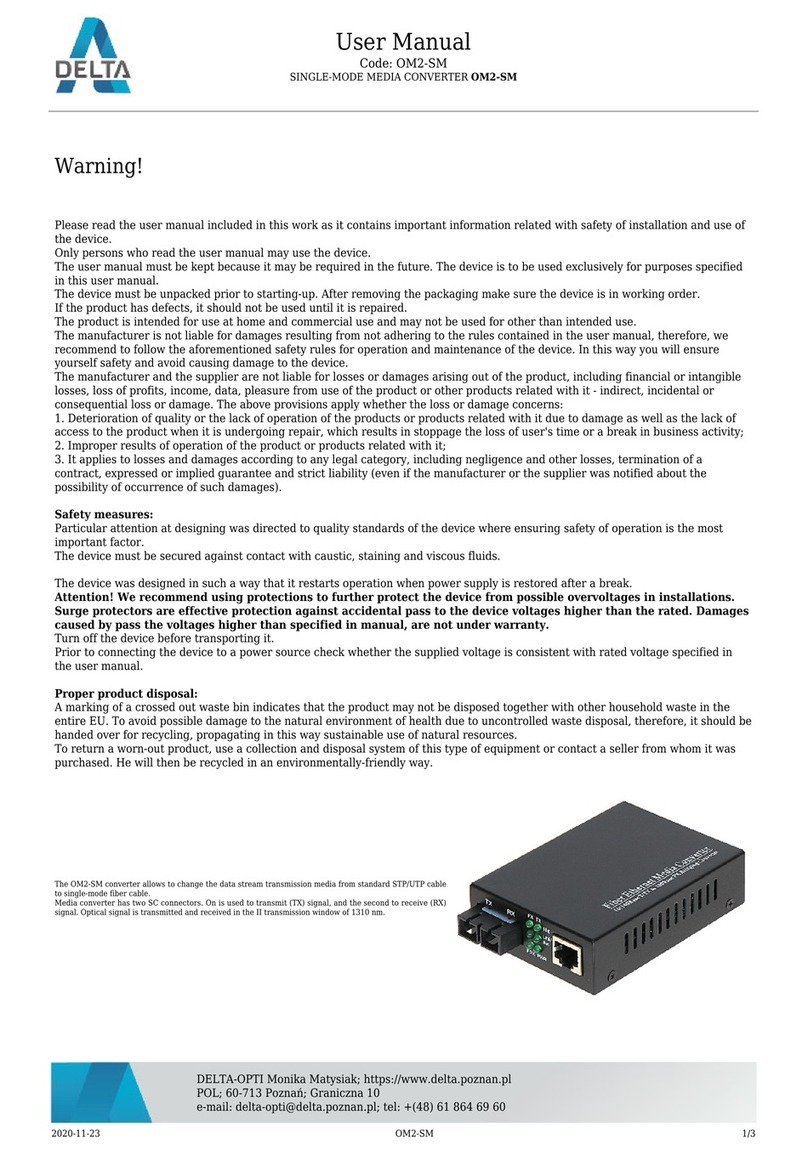
Delta-Opti
Delta-Opti OM2-SM user manual

Baumer
Baumer Hubner Berlin HOG 86 + DSL Mounting and operating instructions

SystemBase
SystemBase SWIFIALLV10 user manual

Siemens
Siemens ZTH Getting started
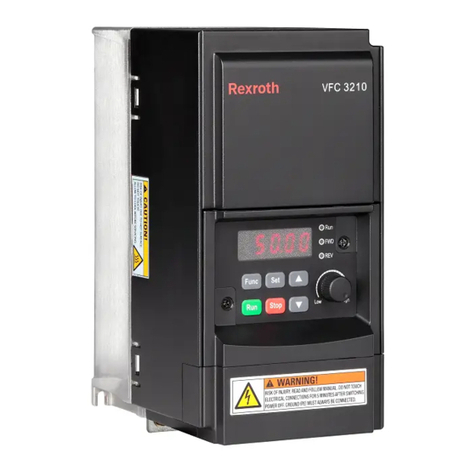
Bosch
Bosch Rexroth VFC 3210 operating instructions
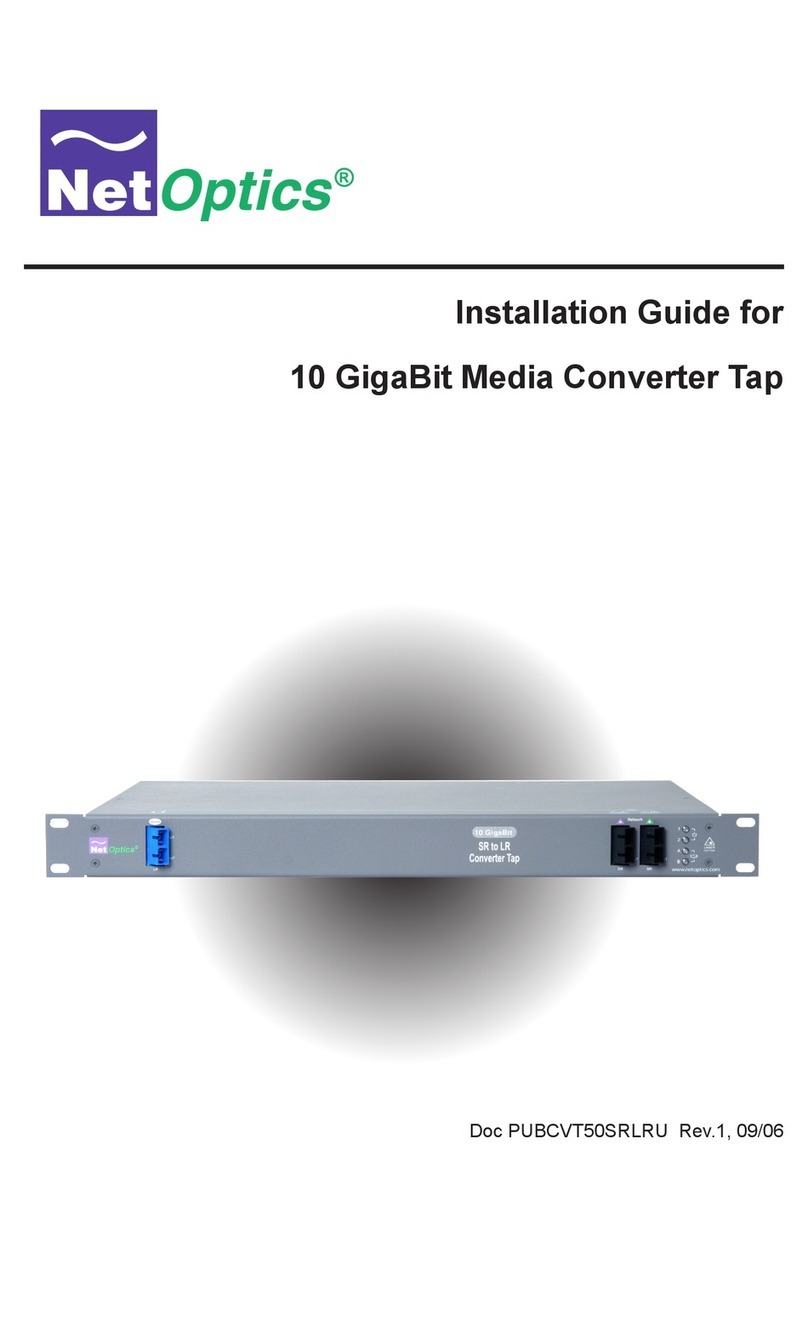
Net Optics
Net Optics 10 GigaBit Media Converter Tap installation guide
